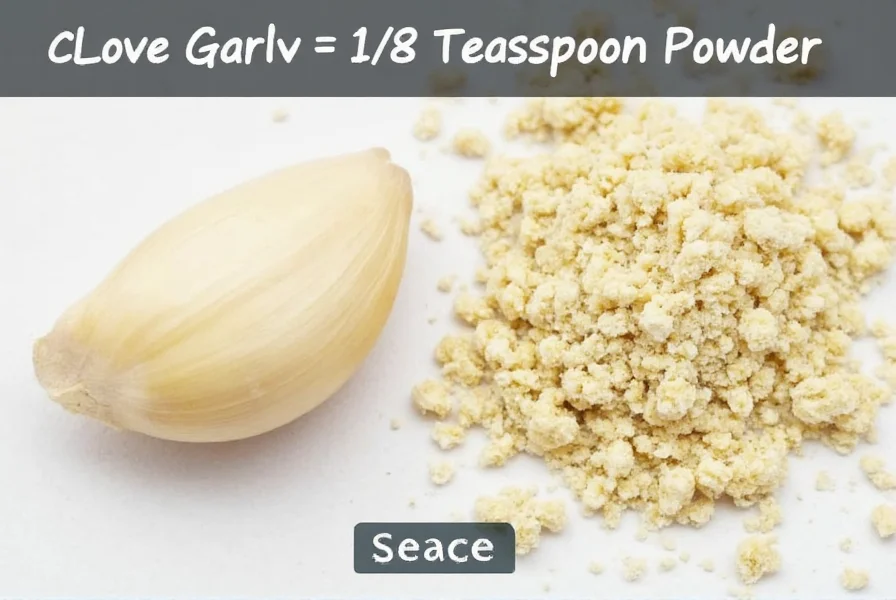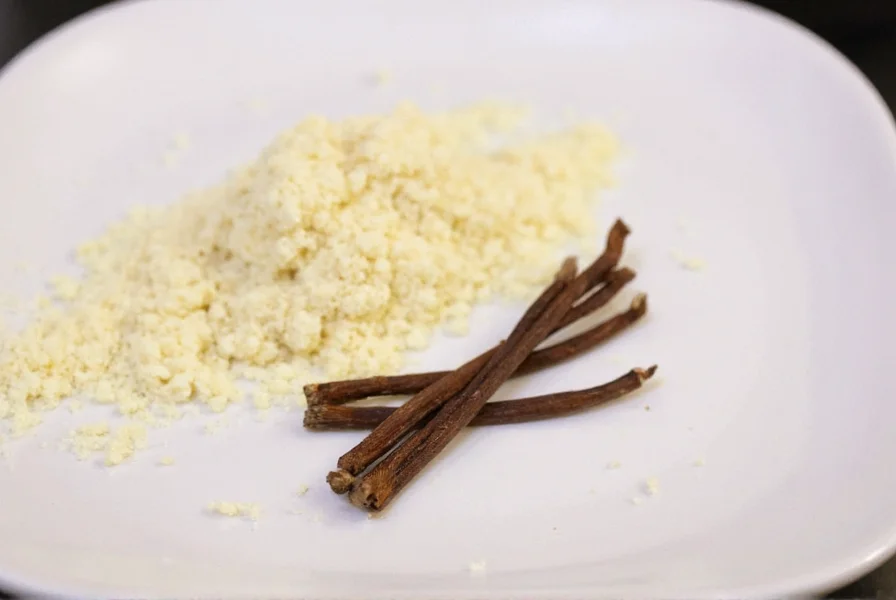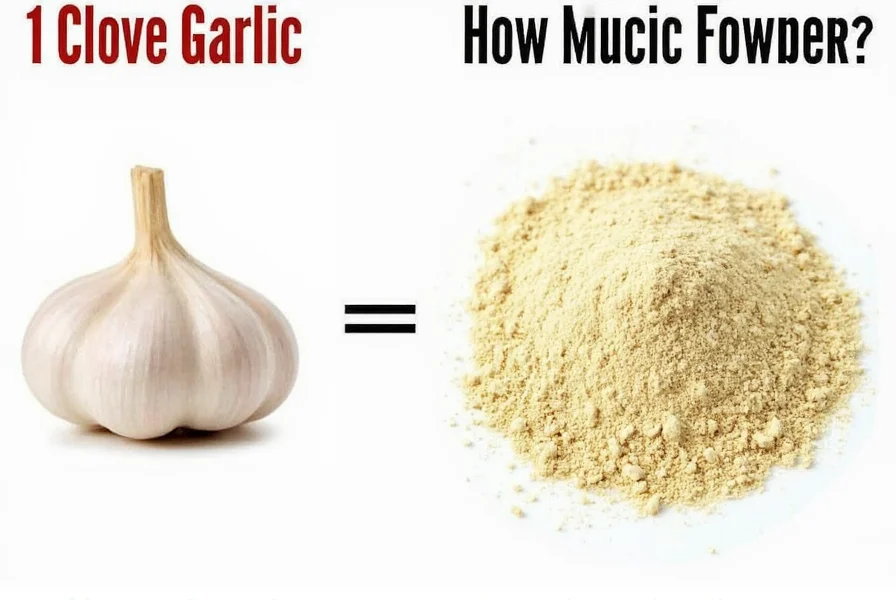Understanding garlic conversions is essential for consistent cooking results. Whether you're adapting a family recipe or following a professional chef's instructions, knowing the precise relationship between fresh garlic cloves and garlic powder prevents flavor imbalances that can ruin your dish.
Why Garlic Conversion Ratios Matter
Garlic serves as a fundamental flavor base in cuisines worldwide, but its form significantly impacts potency. Fresh garlic contains moisture and enzymes that create complex flavors when crushed or chopped, while garlic powder offers concentrated, dried flavor. The conversion isn't simply about volume—it's about maintaining the intended flavor profile of your recipe.
Garlic Clove to Powder Conversion Chart
| Garlic Cloves | Garlic Powder Equivalent | Best For |
|---|---|---|
| 1 clove | 1/8 teaspoon | Sauces, dressings, marinades |
| 2 cloves | 1/4 teaspoon | Stews, soups, casseroles |
| 3 cloves | 3/8 teaspoon | Roasts, grilled meats |
| 4 cloves | 1/2 teaspoon | Pasta sauces, pizza toppings |
| 6 cloves | 3/4 teaspoon | Large batch cooking |
| 8 cloves | 1 teaspoon | Commercial recipes |
Factors Affecting Garlic Powder Substitution
Several variables influence the ideal garlic clove to garlic powder conversion:
- Garlic variety - Different garlic strains have varying potency levels
- Freshness - Older garlic cloves lose potency compared to fresh ones
- Powder quality - Commercial garlic powders vary in concentration
- Cooking method - Dry heat versus moist cooking affects flavor release
- Recipe acidity - Acidic ingredients can intensify garlic flavor
When to Use Garlic Powder Instead of Fresh Garlic
Garlic powder offers advantages in specific cooking scenarios:
For dry rubs and spice blends, garlic powder distributes more evenly than minced garlic, which can burn during high-heat cooking. In bread doughs and baked goods, powder incorporates more uniformly without creating wet spots. When meal prepping large batches, powder provides consistent flavor without the variability of individual cloves.
However, fresh garlic remains superior for raw applications like salad dressings and aiolis, where its complex enzymatic reactions create distinctive flavors that powder cannot replicate.

Practical Substitution Tips
When converting recipes from fresh garlic to powder, follow these professional kitchen practices:
- Start with the standard 1:1/8 ratio but taste before final seasoning
- Add garlic powder early in cooking for soups and stews to allow flavor development
- For roasted dishes, mix powder with oil first to prevent burning
- Reduce other salty ingredients slightly when using garlic powder (it often contains salt)
- Store garlic powder in an airtight container away from light to maintain potency
Avoiding Common Garlic Substitution Mistakes
Cooks frequently make these errors when substituting garlic powder for fresh cloves:
Using equal volumes (1 clove = 1 teaspoon powder) creates overpowering, bitter results. Adding garlic powder at the end of cooking prevents proper flavor integration. Ignoring the salt content in commercial garlic powders leads to oversalted dishes. Not adjusting for recipe size—doubling ingredients doesn't always mean doubling garlic proportionally.
For delicate dishes like fish or vegetable preparations, consider using half the standard conversion ratio. In robust recipes like chili or barbecue sauce, you might increase to 1/6 teaspoon per clove for more pronounced flavor.

Understanding Garlic Powder Quality Variations
Not all garlic powders deliver equal flavor impact. Premium products made from dehydrated garlic maintain more of the original compound allicin, which creates garlic's characteristic flavor. Cheaper alternatives may contain fillers or have been processed at higher temperatures, reducing potency.
When working with an unfamiliar brand, conduct a small test: mix 1/8 teaspoon powder with 2 tablespoons olive oil and let sit for 10 minutes. Compare the aroma and taste to a freshly minced clove. This helps you adjust the garlic clove to garlic powder conversion ratio for that specific product.











 浙公网安备
33010002000092号
浙公网安备
33010002000092号 浙B2-20120091-4
浙B2-20120091-4